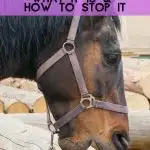If you’ve ever seen a horse at your barn that cribs, you know what a problematic habit it can be. Cribbing, also called wind sucking or crib biting, is destructive to property and can be dangerous to a horse’s health. In fact, most people have seen or used a cribbing collar on a horse at some time or another.
Here is a comprehensive guide to cribbing – what it is, what to watch out for, and how to stop it.
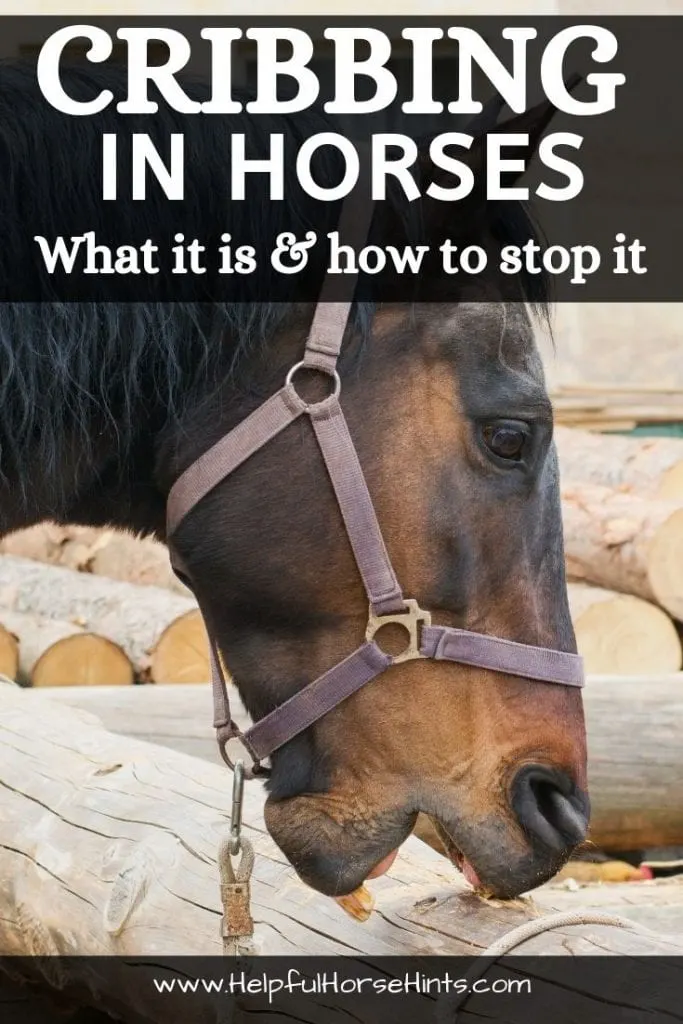
Table of Contents
What Is Cribbing?
Cribbing is an “abnormal oral stereotypic behavior”. A stereotypic behavior is a repetitive or ritualistic movement. It occurs in many different species and is especially observed in animals in captivity.
You may have seen tigers at the zoo pacing back and forth, or elephants swinging their trunks over and over. These are examples of stereotypic behavior – and wouldn’t normally be seen in the wild.
Horses are prone to several stereotypic behaviors such as cribbing, chewing, wind-sucking, weaving, pacing, or kicking. These behaviors are often harmful to both the horse and the owner’s property, and are considered “stable vices”.
- Cribbing: A horse with this habit will grasp a solid, wooden object (like a stable door or fence) with its top incisor teeth. Then he will flex his neck muscles and suck in a big gulp of air, often making a distinctive grunting sound.
- Wind sucking: The horse will suck in a big gulp of air without chewing on a wooden surface.
- Wood chewing: Horses may simply chew on wooden surfaces, but don’t suck in air at the same time.
Cribbing is often referred to as “wind sucking.” While they are related, they are not the same – although the act of wind-sucking is an integral part of the cribbing behavior.
Why Do Horses Crib?
There is no one singular reason as to why a horse becomes a cribber. This behavior is “correlated with altered behavioral response selection in the basal ganglia” – in layman’s terms: the horse’s brain has been changed, and the bad habit stuck.
Horses are individuals with different personalities and quirks, just like humans. However, some risk factors put horses at a higher risk for cribbing or other unwanted stereotypic behaviors.
Here is a list of possible causes for your horse’s cribbing habit, and what you can do to limit the behavior.
| Possible Cause | What you can do |
| Stress | Try to pinpoint the source of your horse’s stress and remove it. Changing up your stable routine can have a significant impact on your horse’s mental well-being. |
| Boredom | Consider enrichment activities or toys. Everybody knows that a bored horse can be a naughty horse, so try to add some fun to your routine to break the monotony. |
| Habit | It can be difficult to break a horse of a bad habit, but with patience and time, you might be able to curb this behavior. |
| Insufficient exercise | Ensure that your horse is getting the proper amount of exercise. If you can’t take him out as often as he needs, try to find someone to exercise him for you. |
| Hunger | Make sure your horse isn’t going hungry! Consult your veterinarian if you’re concerned about your horse’s feeding habits to find the right balance. However, there is a link between cribbing and feeding excessive amounts of grain, so the horse must get enough roughage in his diet. |
| Confinement | Horses are happier with room to run – these herd animals are always on the move in the wild. If you think your horse is spending too much time inside a dark stable, consider changing up his living accommodations. |
| Lack of social contact | Horses are social herd animals, which means they do best in groups. If you can’t afford another equine buddy, consider moving your horse to a place with herdmates – or try adding a goat or chicken instead. See our related resource on this: Signs of Loneliness in Horses + How To Help. |
| Highly concentrated diets | Discuss your horse’s diet with your veterinarian before making any drastic changes. However, decreasing the amount of grain and sweet feed they receive can help. |
| Digestive issues | There is evidence to suggest that horses may crib to alleviate gastrointestinal distress. Talk to your veterinarian about adding an antacid to your horse’s diet. |
| Early weaning | Unfortunately, there’s not much you can do about this one if your horse comes to you as an adult. However, find out when and how he was weaned – foals weaned early and fed too much concentrate can have a higher risk of cribbing. |
What Are the Health Risks from Cribbing?
While this behavior is rarely fatal, some problems are directly linked to cribbing. Chewing on wood can wear down a horse’s teeth faster, and leave them prone to dental problems. Some horses will wear away their top teeth completely – making it difficult to eat the rough forage they need.
Cribbers are also more prone to colic, so pay close attention to your horse’s behavior for symptoms. Cribbers are more likely to experience epiplopic foramen entrapment – when the horse constantly sucks air, he may swallow enough to create gas bubbles in his intestines. Ouch!
Some horses may also lose weight and suffer from malnutrition, preferring cribbing to eating. Keep a close eye on your horse’s condition, and make sure he is seen regularly by your veterinarian.
Is Cribbing Contagious?
Many people believe that cribbing behavior is learned from other horses. Research suggests that this is likely not the case, but if horses are exposed to similar conditions that put them at risk for cribbing, they may do it too.
How Do I Stop My Horse from Cribbing?
Because every horse has individual needs, there is no singular way to stop cribbing. Unfortunately, this behavior is not curable, but with proper care and attention, it can be managed.
Here are some techniques that you can implement to curb this destructive behavior.
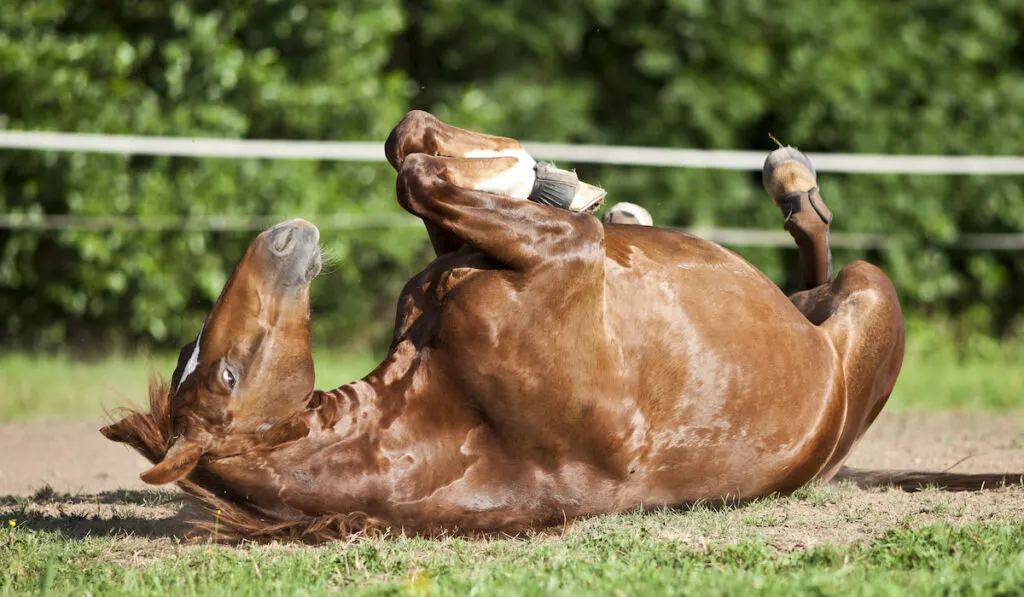
Behavioral Enrichment
There are many different ways to add enrichment to your horse’s day.
- Free Exercise. Preferably with a buddy! If your horse spends a lot of time alone in his stall, try to find an empty pasture or corral that you can use and send him out there with a friend. Even some time is better than none. If the weather is bad and you’re blessed with an indoor arena, use it!
- Training. Whether you’re working on ground manners, complicated dressage moves, or trick training, these can all be positive ways to stimulate your horse’s brain. Just be sure to consult a professional trainer if you’re unsure about the best way to go about it.
- Toys. Horses love toys. You can purchase a variety of commercially made balls, toys, puzzles – or make your own! Try filling an old milk or juice jug with treats, poking a few sizeable holes in it, and letting your horse go wild. Just be sure to remove any broken or damaged toys from your horse’s rotation.
Be sure to check out my post Easy Horse Enrichment Ideas for the Bored Horse for ideas.
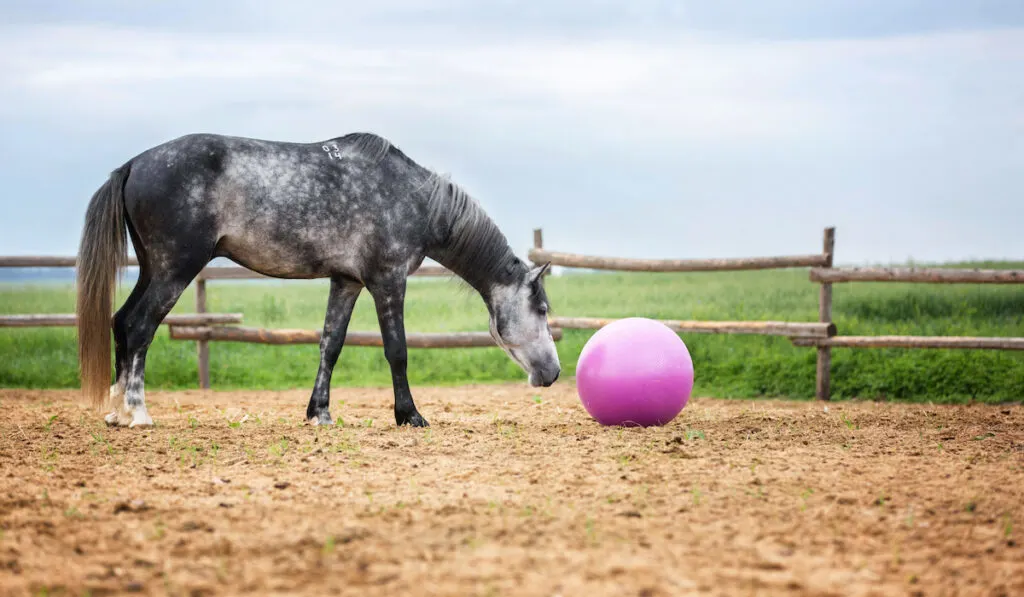
Cribbing Collars
There are many different styles of cribbing collars available on the market. Cribbing collars must be placed high on the horse’s neck, just behind the jaw. These tight collars prevent horses from flexing the muscles to make the wind-sucking movements – if they can’t flex their necks, they can’t crib.
You may have to try a few to see which one works for your horse. Because they must be worn so snugly, check them regularly to make sure that they’re not leaving any irritating marks.
Cribbing Muzzle
An alternative to the cribbing collar is the cribbing muzzle. Designed to allow the horse to eat and drink normally, a horse wearing a cribbing muzzle can’t put his top teeth onto a hard surface.
Environmental Management
- Electric fencing. Replacing vast swaths of wooden fence with an electric one can help reduce the amount of surface area for a cribber to gnaw.
- Metal chew guards. Strips of metal can be applied to stable doors to discourage horses from chewing on them.
- Stable chain or mesh. If you can, replace your horse’s stable door with a chain or flexible guard. Not only will this eliminate a prime surface for cribbing, but he’ll be able to see more than the confines of his stall.
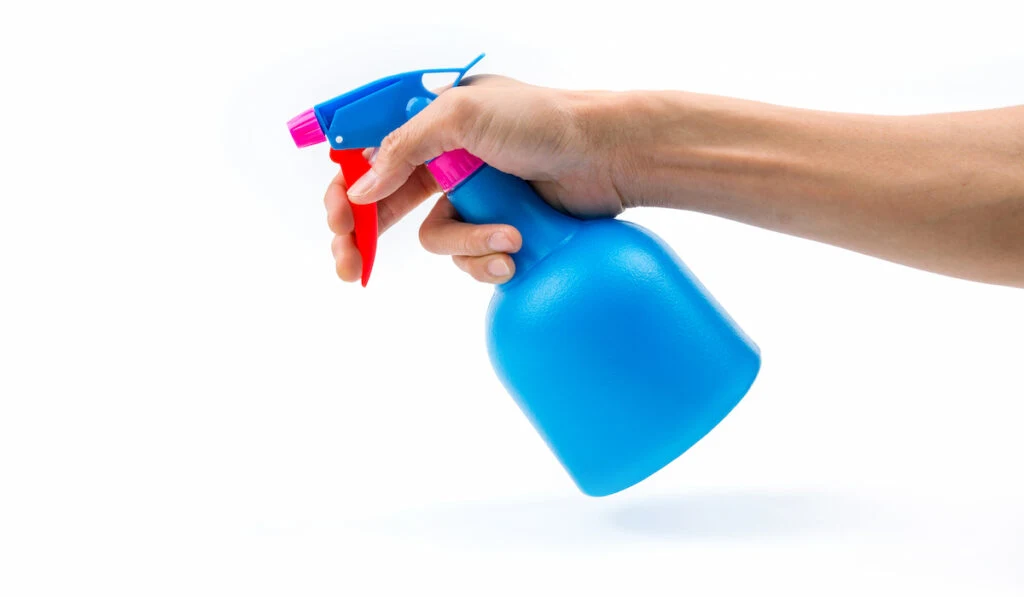
Other Preventative Techniques
- Surgery. This a drastic option that is probably only best utilized as a last resort for most horses. However, recent new surgical techniques have greatly improved the success and outcome for cribbing horses.
- Bad tasting spray. Cribbing isn’t chewing. Horses only rest their teeth on the wood – they don’t actually taste it with their tongues. Foul tasting sprays may work for wood-chewers, but likely won’t stop a determined cribber.
- Acupuncture or herbal remedies. There are many different natural remedies that “guarantee to stop a cribber”, but they aren’t backed by science. Try them at your own risk. Always consult your veterinarian if you’re not sure!
Shock collars and hog rings are cruel and unnecessary, even for desperate owners.
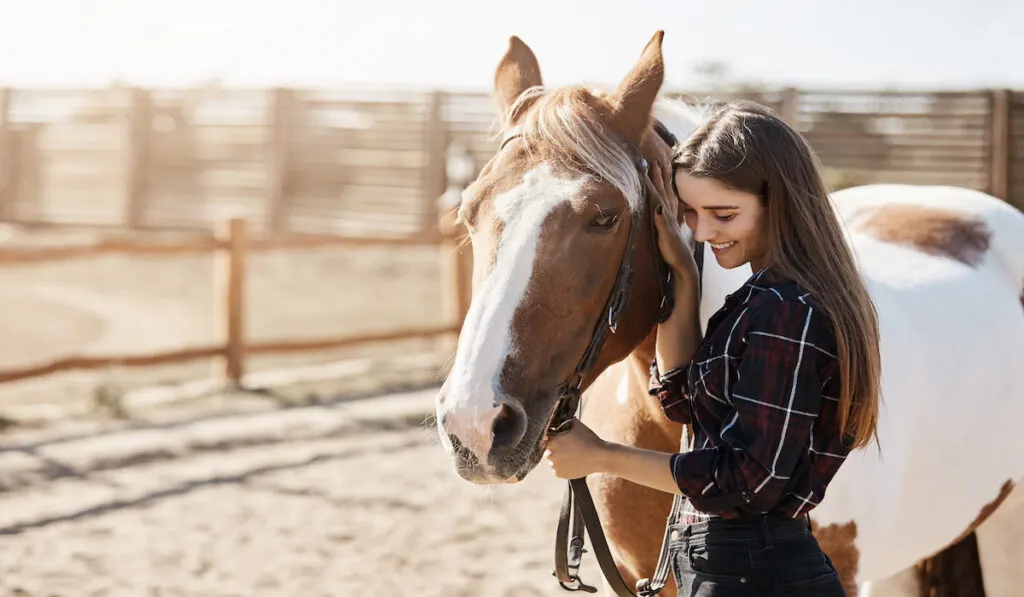
Considerations for Purchasing a Cribber
While cribbing is rarely fatal, it can be a nasty habit that is hard to curb. Make sure that your barn or pasture is well-equipped to handle your horse’s needs, and prepare to spend time working with them on breaking this habit.
Horses with established vices may be harder to sell in the future, so consider your needs as well. Always inform a new owner of your horse’s stable vices. Even if you keep your cribber’s behavior under control, he may pick the habit back up in his new home.
But, the good news is that even a horse with some bad habits can still make a wonderful companion and partner – they just might need a few adjustments and extra patience!
Resources
https://veterinarynews.dvm360.com/cribbing-horses-surgical-approach-treatment
Related Posts
- Horses & Music: The Science, Benefits and Artistic Expression
- Easy Horse Enrichment Ideas
- Guide to Choosing Your Horse Manure Fork or Pasture Scooper

